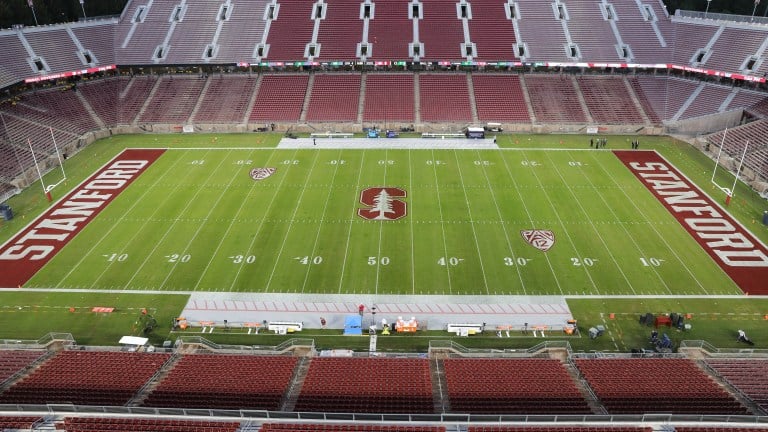The keys are out, and they are jingling. “First, first, first, first down.” Five, six, seven, eight WOO! A sea of Cardinal red in Stanford Stadium.
Stanford has a football tradition that extends to 1891, a bonfire tradition that dates to 1898 and a winning tradition that ebbs and flows.
Stanford played in the Rose Bowl in 1902, only to leave without scoring a point. Highlights of the past century include tying with Alabama in the 1927 Rose Bowl under head coach Pop Warner and beating Nebraska in the 1941 edition with Clark Shaughnessy at the helm, in addition to claiming the national championship in both years. Lowlights include a pair of defeated seasons, 0-9 in 1947 and 0-10 in 1960.
Ninety-eight years after its first Rose Bowl, Tyrone Willingham took Stanford back in 2000, only to meet the same losing fate. Buddy Teevens took over two years later, only to see his term expire after three losing seasons. Walt Harris came in 2005, and the Cardinal limped to a 5-6 record. After that season, Stanford Stadium was downsized from 89,000 to 50,424 seats.
The last game in the old Stanford Stadium was a 38-31 loss to Notre Dame. The first in the new Stanford Stadium was a 37-9 loss to Navy, where the Leland Stanford Junior University Marching Band was banned from playing. The rest of the 2006 season went similarly, and Harris was fired with an overall record of 6-17.
That 2006 season also marked Toby Gerhart’s ’11 first on the Farm. By his last, the Cardinal made their first bowl game in eight years on the strength of a then-program record 1,861 rushing yards. 223 of those yards came in an upset of seventh-ranked Oregon in Stanford Stadium.
After that game, Gerhart told ESPN Radio, “three years ago, we were the worst thing on campus. People hated us. Now we’re a football school again.”
Troy Clardy ’97 remembers that jump in performance and the corresponding jump in fan support.
“That quote stuck with me, especially while the Cardinal spent the following years as a top-ranked team and had the student support to match,” Clardy said. “At its peak, I think the Red Zone came close to rivalling what the Sixth Man Club was in its heyday. It was amazing to see that consistent support. Fun, too!”
It was likely the best decade in Stanford football. There were nine bowl games in 10 years. Nine times out of 10 Stanford won the Big Game. Twice Stanford went to the Rose Bowl, and it ended the 2010 season ranked fourth in the AP poll after a dominant Orange Bowl victory.
Of course, 2019 was the year Stanford did not attend a bowl. It was also the first in 10 years that it tossed up a win to Cal at the Big Game. Attendance was down, sometimes even shockingly so. After the season finale, a demoralizing defeat to Notre Dame, The Daily received emails about the lowly fan support. As the host of the TreeCast, Clardy found himself asking athletic director Bernard Muir about attendance. Students received an email from the athletic department with a survey about the sports culture.
There are a lot of reasons to believe that Stanford never fully adopted a sports, nor even football, culture. As national Heisman voters did not vote for Christian McCaffrey ’18 because they could not bother to watch his games, Stanford students would not bike over to Stanford Stadium for games.
“I will never forget this,” McCaffrey told The Athletic. “My sophomore year against UCLA, I had a heck of a game. I biked back to my dorm, I’m kind of on a high horse. I walk in, and six or seven people asked where I was! I think I had something like 243 yards rushing, four touchdowns. And they didn’t know where I was!”
Here lies the crux of Stanford football’s struggles. Winning is not enough. California weather is not enough. A beautiful venue, a star player and tailgating are not enough. Free student tickets are not enough. Stanford cannot fill its own stadium. Will football ever be enough for Stanford?
Or, perhaps, the better question: Why are there rarely enough fans to fill the stadium?
Do Stanford students care about football?
Let’s start with the students. All Stanford students are eligible for free admission to all football games if they claim their tickets in advance online. Stanford’s student section, the “Red Zone,” fills between 7,000 to 8,000 seats of the stadium’s 50,000 capacity.
At some of the big rivalry games like the Big Game, the Red Zone is often full of shirtless students dressed in red body paint in allegiance to the Cardinal.
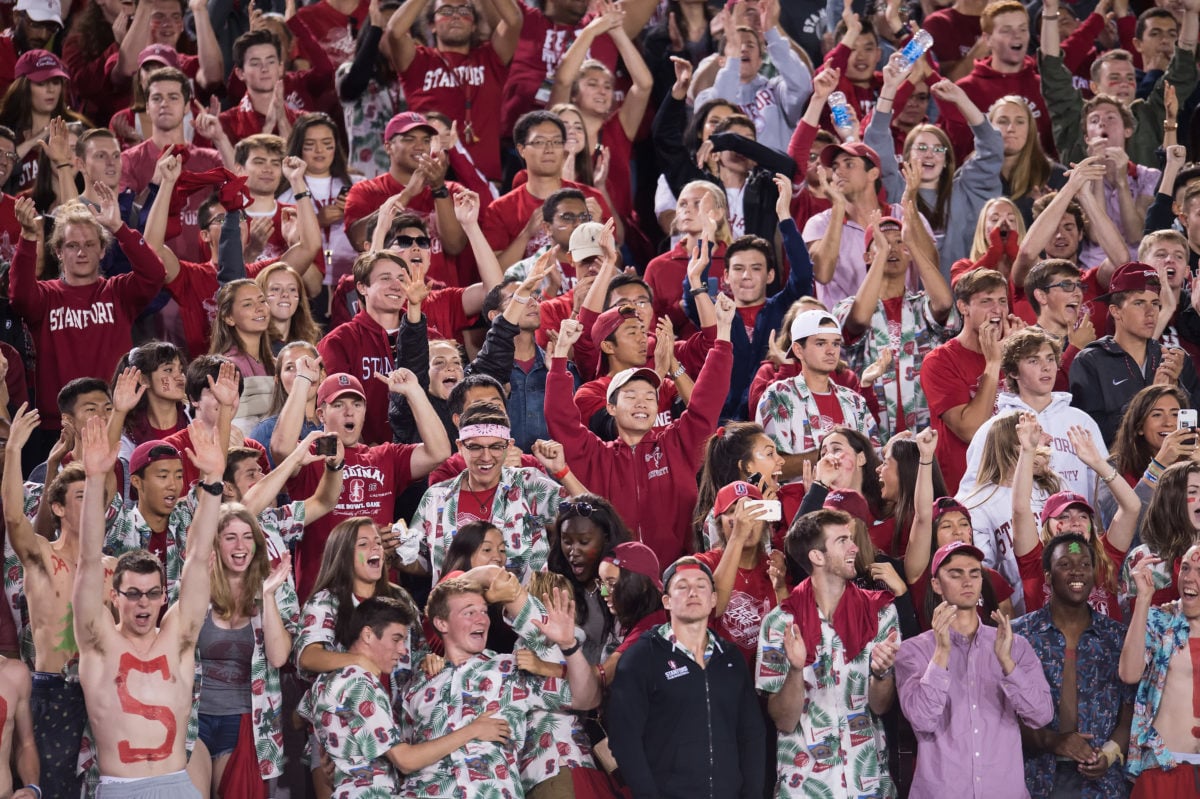
For most games, however, this sort of fandom is a rarity.
“Players in the mid 2000s used to call the Stanford stadium ‘The Library.’ They come in and get your work done, [and] it’s not that loud,” said former Daily sports editor Sam Fisher ’14.
This is even after Stanford downsized the football stadium from what was originally 85,000 seats to fit roughly 50,000. The renovation in 2005 was speculated to be largely due to the embarrassingly small student turnout for a contrastingly lofty stadium.
The underwhelming student section prompts a number of questions: Do Stanford students have time to attend football games in a 10-week academic quarter? Do they care enough about football? Do they know the athletes well enough through classes — or through the press — to want to attend the games?
“The whole social theme didn’t revolve around going to football games or tailgating event,” said former Daily sports editor Alexa Philippou ’18. “I mean, you could do that if you wanted to, but it wasn’t the end all be all.”
Around 97% of eligible undergraduates live on campus. Between organizing club activities, doing research, expanding upon an idea from a hack-a-thon, staffing student residences, participating in greek life or simply catching up with p-sets for mid-terms that begin from less than a month into the quarter, Stanford students run (or bike) on a tight schedule. Overcommitment and flaking to existing commitments is commonplace.
Even so, there are a few student groups that will rigorously (almost religiously) attend the games. The Leland Stanford Junior University Marching Band and the Axe Committee are a couple of the most representative groups known to bleed Cardinal spirit at Stanford games. But even members of these groups recognize that student presence at stadiums is frequently underwhelming.
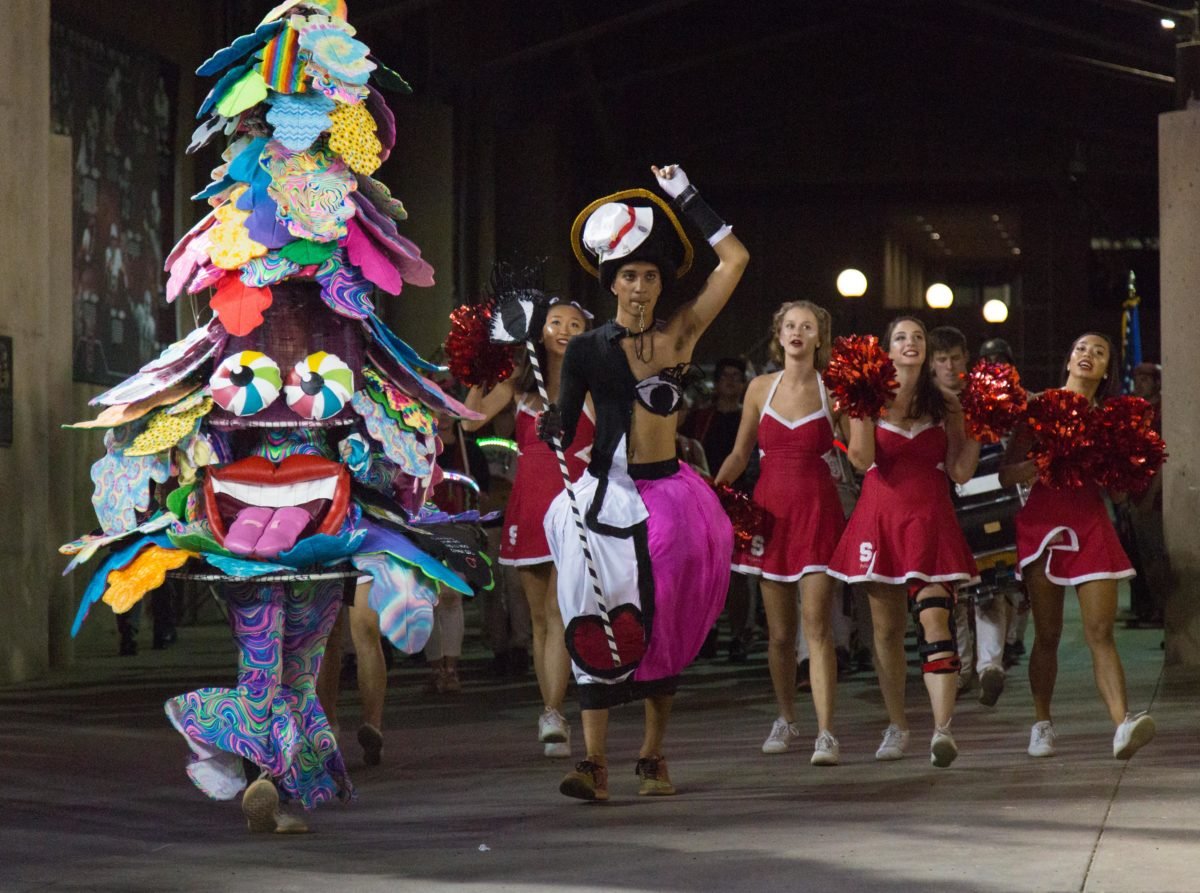
“[It’s] really both a numbers game in terms of our student population being only like 7,000 undergrads, as well as, the demographics of who goes to Stanford [and] cares about American football,” said Axe Committee chairman Alex Bradfield ’21. Out of all the schools in Division 1 football, Stanford has one of the smallest student populations.
“I also think the culture of Stanford is really different in that we have great athletics all around, and we’re not a football dominant school in terms of athletics the way that many other places are,” Bradfield said. “And as well as just with the academic nature of Stanford, I don’t think everyone is here for the experience of getting to go to athletic events.”
But even for a busy campus like Stanford, some seasons have managed better attendance than others.
“Stanford fans are kind of hard to get. They’re not gonna just show up for a mediocre team … they have to be really really good for the fan base or at least the students to show up,” said Philippou, who entered Stanford in the same year as McCaffrey. “I think it was easier my sophomore [or] senior years when they had a Rose Bowl caliber team.”
“I have a lot of memories my freshman year [where] people [were] really going out to the game,” said former Daily sports writer Nicholas Radoff ’15.
When Radoff arrived as a freshman in 2011, Stanford was coming off a 12-1 record, a dominant Orange Bowl performance and a No. 4 end-of-season ranking. Jim Harbaugh had just passed the baton to head coach David Shaw ’94 after being hired away by the NFL’s San Francisco 49ers. Future NFL stars Richard Sherman ’10, Andrew Luck ’11, Doug Baldwin ’11, David DeCastro ’12, Coby Fleener ’12 and Zach Ertz ’13 would soon join him in the professional ranks.
Reminiscing about what Radoff (and many others) recalls as the “Golden Age,” he acknowledged the recent decline in student stadium presence. “I also think the novelty has probably worn off a little bit from it all. I think that as successful Coach Shaw has been, you’re just waiting to get to that next level and it doesn’t happen.”
“2011 was a perfect storm of a lot of things coming together. Number one, we had the best player in the country, Andrew Luck. People knew that he was the best player in the league coming into the season. [We had ] that hype,” said Fisher, who co-authored the book “Rags to Roses: The Rise of Stanford Football” in light of the team’s success.
He said there is a difference in temperature watching games today: “I think that even if the team is winning, but it’s not exciting, it’s harder to get people to come … Stanford’s a place where everyone wins all the time.”
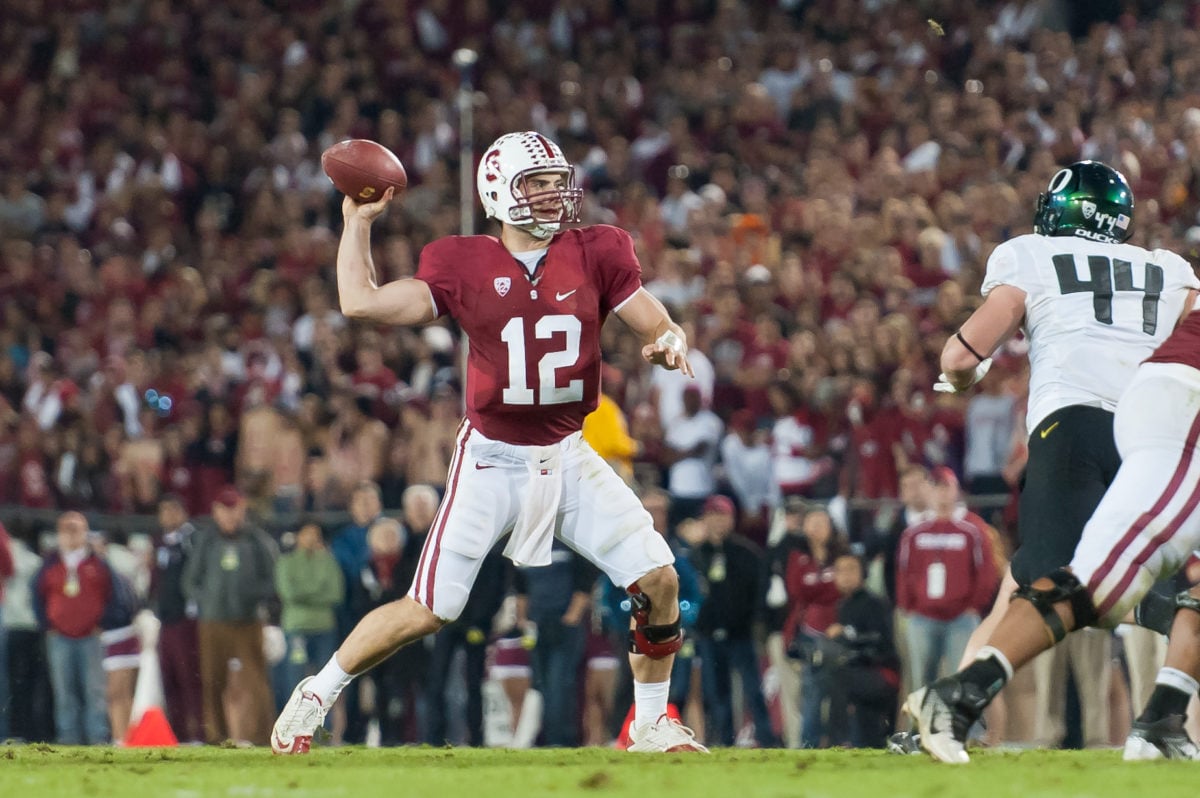
While the program showcased some of its best seasons in the past two decades, earlier student culture around football demonstrated strength regardless of team performance.
“Most students, at Stanford and elsewhere, attended all home games, regardless of the team’s record or the weather,” said longtime Stanford football fan Bill Felton M.A. ’75. “It was an integral part of the campus culture and the student experience. Today’s students, I suspect, have many weekend entertainment and other options, so football may be only one of many attractions.”
Is football on a decline, everywhere?
For better or for worse, Stanford isn’t the only campus to see a decline in student attendance.
“The SEC actually had a much bigger percentage drop in football attendance this fall [2019] than the Pac-12 did,” Clardy said. “We keep getting told that SEC football supposedly means more, but they’re grappling with dips in attendance, too.”
In fact, Alabama went as far as to offer a controversial app that kept track of whether students would stay until the final quarter. The SEC school’s location-tracking app aimed to incentivize students to stay until the end of the game by rewarding loyalty points that students could potentially cash in for postseason tickets.
This comes as a surprise for football powerhouse colleges like Alabama, where football has been an essential part of campus culture for a long time. Among these big football colleges, this past season’s spotlight went to Louisiana State University. LSU dominated the college football scene, culminating an undefeated season with a win over Clemson in the College Football Playoff National Championship.
“I think the LSU presence in the entire stadium is really strong, because the LSU fan base itself is really strong in the state and the school has a very strong Louisiana native [and] resident presence just in terms of the student population,” said Jacob Beck, a senior at LSU. Beck covers sports for LSU’s student paper, The Daily Reveille. “[And] there’s really no school in Louisiana that really competes anywhere close with LSU in football, and [football is] just a big part of the culture in Louisiana.”
Nevertheless, even the Tigers suffered a slight decline in college football attendance. Prior to its breakout season, LSU was struggling to combat dropping attendance numbers.
“There has been sort of fall off in students staying for the whole game,” Beck said. “Usually around the second half, a lot of students will make their way out of the stadium, typically go out to go out, go to bars or whatever they whatever the case may be. I would say that whenever the game is big, and if the score is close, I think it isn’t quite as bad.”
If this is the case for big football schools with large student populations, how does this national trend affect smaller schools that have had a small student body to begin with?
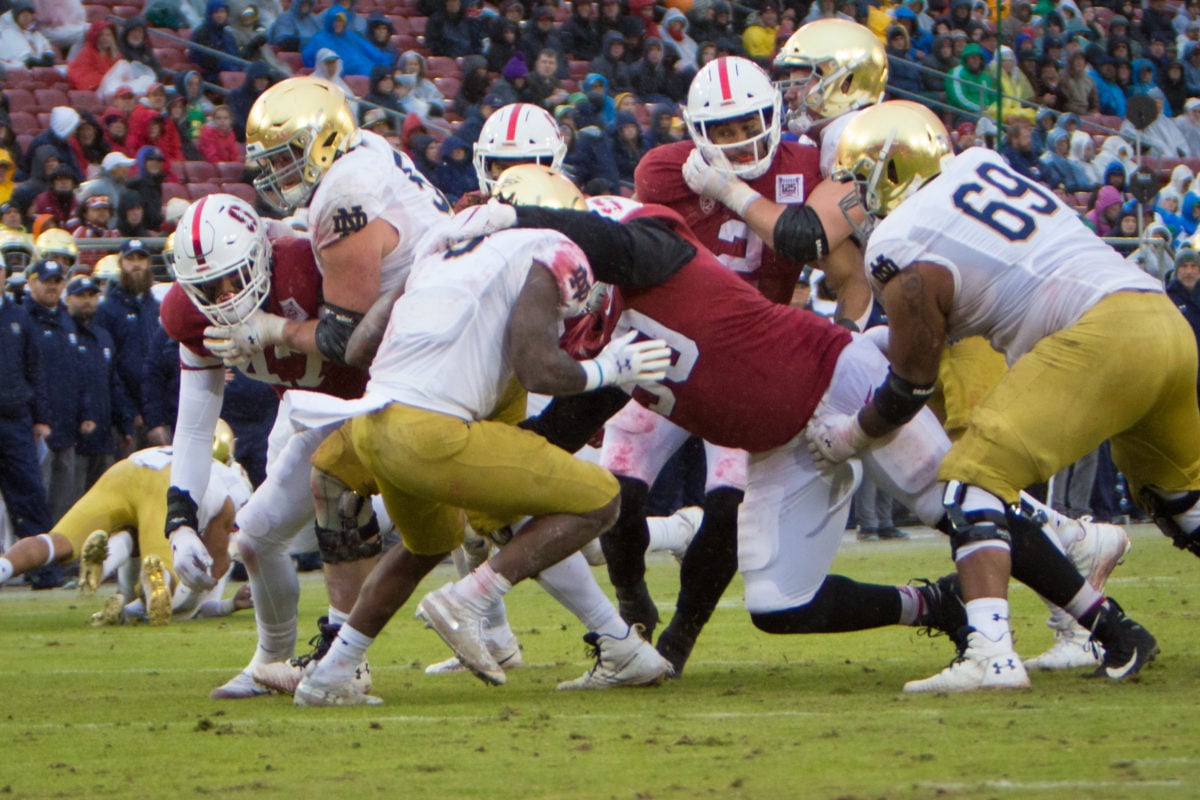
The University of Notre Dame, like Stanford, is home to a smaller student body. Located in South Bend, Indiana, the college has an undergraduate enrollment of 8,617 which is only a little over Stanford’s student population of 7,083. For the Fighting Irish, however, the small campus easily fills up around game time.
“Campus transforms, certainly during game time,” said Holden Perelli, a Notre Dame senior who is a student broadcaster for Notre Dame’s Fighting Irish Media. “Thursday night [you notice] people pull into like the local hotel, which is on campus, and families start to walk around, people start to walk around. So you see people taking pictures by the library or other spots around campus by the stadium and stuff like that.”
Notre Dame football frequently garners national media. Currently, the university partners with NBC Sports to televise home football games, and which Perelli worked at the network as a production assistant.
With the national media presence followed by a widespread fan base, Notre Dame fans fly in from coast to coast.
“People [come] up from out of town and they’re Notre Dame fans. It’s not like Stanford where you play Oregon every year, or a play UCLA every year,” Perelli said. Unlike Stanford, which is part of the Pac-12, Notre Dame
is independent of a conference affiliation. “It’s not like Stanford where you play Oregon every year, or you play UCLA every year. Notre Dame doesn’t necessarily play the same teams every year.”
But even Notre Dame’s loyal football fandom was no exception to college football’s downward trend. This past November, Notre Dame broke its sellout streak of 273 games halfway through the season. Gone was the era of packed seats that began in 1973.
The numbers presented by the NCAA regarding FBS college football attendance attest to the steady decline. In 2018, an average of 41,856 fans per game for the 129 FBS teams marked yet another low — the lowest it’s been in 22 years.
This doesn’t change the fact that Notre Dame is a stellar anomaly of a small school with a strikingly large football presence. Many small schools in Division 1 football struggle to keep a solid fanbase, and student turnout is easily swayed by the team’s performance.
Duke University, like Stanford, has a small undergraduate population of 6,526. The Blue Devils are best known for their men’s basketball team — which alongside its rival UNC — is one of the most successful and widely known college basketball programs in the country.
With a small student body size and other sports to cheer for, student presence at Duke’s football games fluctuate heavily depending on how the season is going. Hank Tucker, a recent Duke graduate and former sports editor for Duke’s student newspaper The Chronicle, grew up in Durham, North Carolina, where Duke is located. Growing up going to Duke’s games, Tucker recalls strong student and fan turnouts between 2013 and 2014, when Duke football was at its prime. In 2013, the Blue Devils won their first ACC Coastal Division title.
However, Tucker acknowledges that the team’s recent lukewarm performance makes it difficult to fill the football stadiums.
“We don’t have as many students as a lot of the big state schools do,” Tucker said. “[Also], the alums disperse to New York [and other] big cities after school and don’t really stick around locally so it’s tougher to fill up than for a lot of schools.”
‘And the game was televised in my area’
Increasingly, the premier football product is on a screen. For the national championship between LSU and Clemson, ESPN held nine broadcasts on television channels alone. In addition to the traditional broadcast, the options included a Coaches Film Room on ESPNU, Sounds of the Game on ESPN Classic and Hometown Radio on the ACC Network and the SEC Network. On the app, the network debuted Refcast, supplementing the All-22 option, Skycast and Techcast.
Conferences, and by extension programs and entire athletic departments, rely heavily on revenue from broadcast rights deals. According to Pac-12 commissioner Larry Scott, television revenue accounts for 25-40% of university athletic budgets. Boise State is currently suing the Mountain West because the conference failed to make a proportional increase to the $1.8 million more Boise State receives than each other program in the conference.
The Pac-12 meanwhile, has a sputtering television deal. Despite sporting five of the top 17 markets in the country — Los Angeles, San Francisco, Seattle, Phoenix and Denver — the conference paid out a total of $29.5 million in 2018. For context, the Big Ten was at $54 million, the SEC at $43.7 and the Big 12 at $38.8 million. Much of that disparity owes to the conference owning its own rights for the Pac-12 Network. Other conferences partner with a larger entity such as ESPN or FOX to distribute content. The Pac-12 conference will not be able to negotiate a new TV contract until 2024.
The landscape has changed drastically from when Felton was a student. At that time, he recalled, most stadiums did not even have lights, so afternoon games were the norm, and the radio broadcast was only serviced regionally, except for national brands like Notre Dame and the service academies. The only contests on television aired on ABC, which had an exclusive deal for college football, and any one team only appeared once, maybe twice, in any given season.
“There was more incentive to attend home games in person,” Felton said. “Seeing the games on TV or hearing them on radio were limited.”
This is no longer the case. Another important barrier to attendance is the infamous six-day window, where kickoff times are not announced until the week of the game.
“How does that benefit the fans who might actually want to come see a game in person?” Clardy asked. “Especially if they need to travel a long way to get there?”
That was the situation Felton found himself in this year, when Stanford traveled across the country to face then-No. 17 UCF.
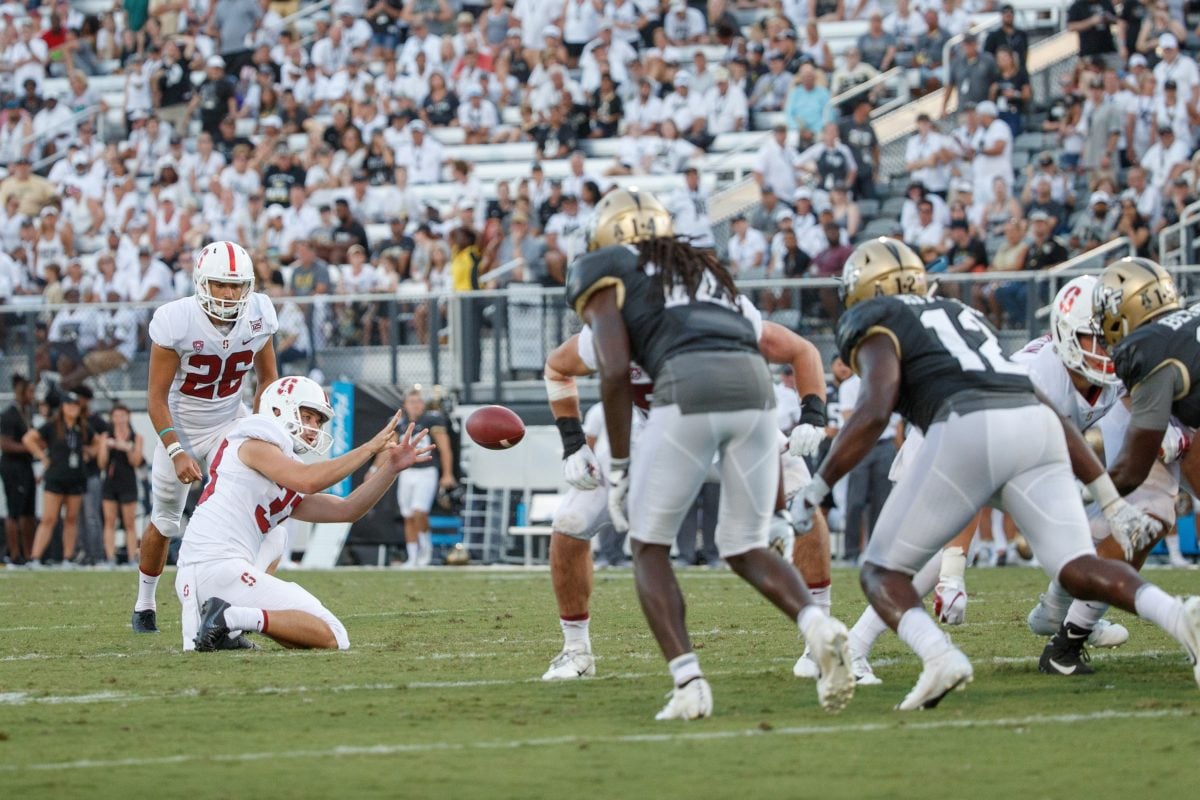
“I did not attend the Stanford-USF game in Tampa this past football season,” Felton said. “Tampa is a four hour drive from Boca Raton, plus the costs for tickets, travel, parking, meals and lodging are rather expensive — and the game was televised in my area.”
Where are we now?
The final two games of the 4-8 2019 season shared a few poignant similarities. On the field, the football team led early but came up short, and both times opposing fans flooded onto the field after the game. That those were enthusiasts of Cal and Notre Dame only heightened the torment.
“I don’t worry about that,” Shaw shrugged off the post-game antics to the press following the Irish’s first win at Stanford Stadium since 2007. “I mean to the victors go the spoils. I plan on celebrating at a lot of other people’s fields next year.”
More likely than not, Shaw’s plan will come to fruition and the team will be victorious away from the Farm in 2020, especially more so than the singular road win at Oregon State in 2019. There is a window, and the Cardinal may be poised for success this upcoming season. Shaw’s statement, however, must be read carefully: “I plan… ”
Gone are the days of Stanford selling out its allotment of Orange Bowl tickets. Once more, the narrative dictates that Stanford fans will not travel — not even to Stanford Stadium. But maybe, just maybe — a historic comeback will do the job. Otherwise Shaw will be celebrating on his own.
Contact Inyoung Choi at ichoi ‘at’ stanford.edu and Daniel Martinez-Krams at danielmk ‘at’ stanford.edu.
